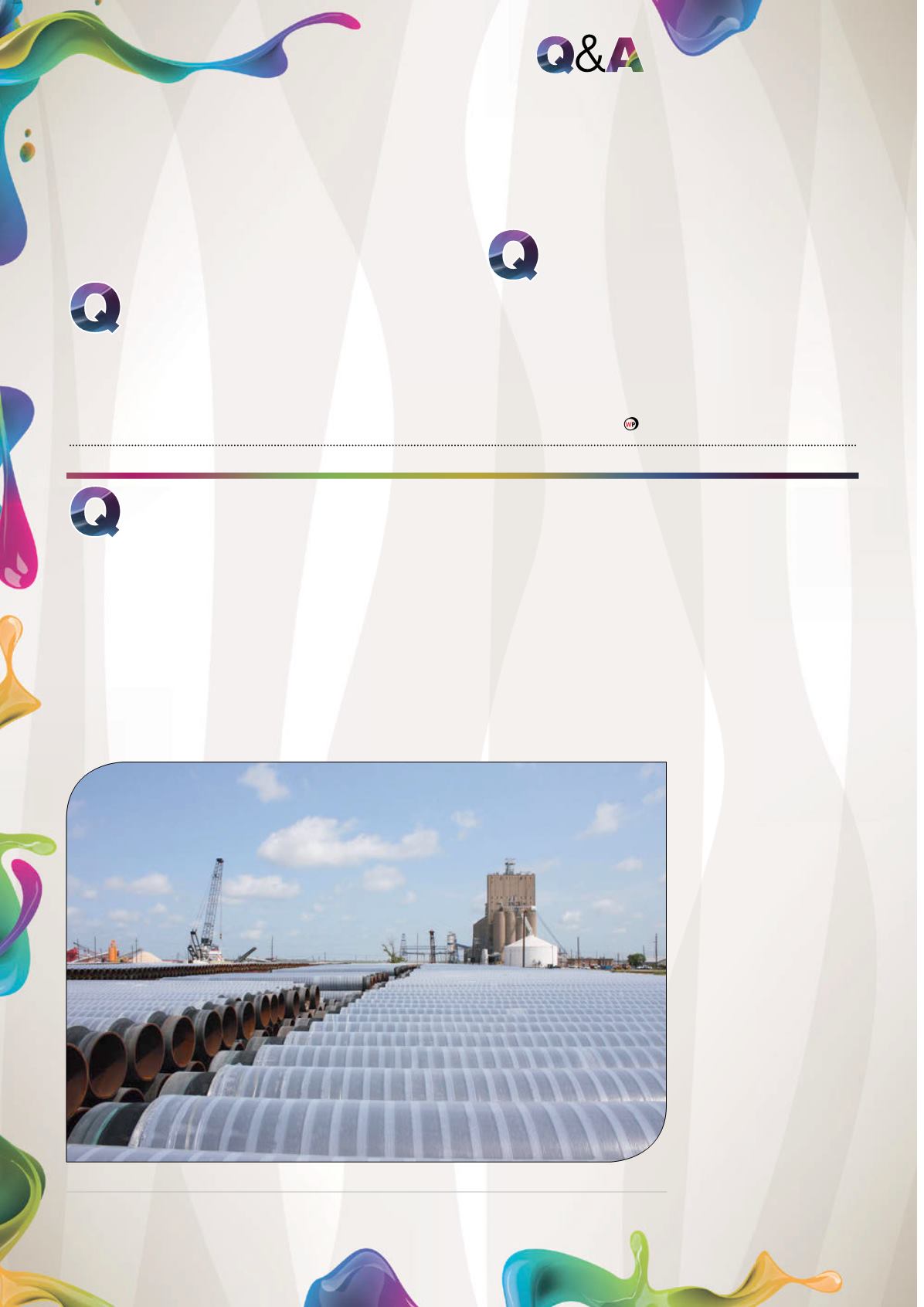
COATINGS
ShawCor Group
What are the best methods for
avoiding premature coatings failure?
Each coating system has unique challenges that
must be addressed during the specification phase and coating
application processes.
Assurance of optimal coating performance begins with the
selection of a knowledgeable, highly reputable and financially
stable coating provider. Core capabilities will include a broad
understanding of both coating technologies and construction
practices. Application of the selected coating must be in
compliance with rigid, well-documented manufacturing
processes, and in accordance with a comprehensive inspection
and test plan (ITP) extending from pre-inspection of the
coating materials to final coating acceptance testing. A fully
functional quality assurance team will monitor and document
the inspection and testing results against the ITP requirements
to insure that the agreed performance expectations are
achieved.
Premature coating failures could occur even on coated
pipes with excellent quality and inspection. Deterioration of
a coated pipe during long-term storage is a good example.
A robust and comprehensive storage procedure needs to
be fully implemented to ensure coating system integrity
through the point of utilisation. As more oil and gas reserves
are developed in more challenging and remote locations,
increased transportation difficulties and thus increased
long distance pipeline
constructions have been
seen. Large pipe volumes
are often required on a
single pipeline project, and
thus pipe coating activities
may take place several
months or years before
the pipes are loaded out
for installation. Storage
of coated pipe over an
extended period (especially
in the tropic environment)
can lead to deterioration
of steel pipes, thin film
coatings, undercutting
(or corrosion creep) of
external FBE/3LPE/3LPP/
insulation coating, internal
coating cutbacks; and
general accumulation of
dust and debris on internal
and external surfaces. An
effective preservation
method for long-term
of external coatings can accomplish the desired functions as
long as they have high electrical insulation properties with
effectivity based on non-ageing parameters and no issues with
delamination at the steel/coating interface. The application
method must not adversely affect the properties of the pipe.
The ability to selfheal minor cracks or damages due to the
self repairing effect is another tool in the arsenal to stop
corrosion
What advances in coatings materials
and application will prove to be
most successful in the next few
decades?
Coatings that do not depend on extensive and expensive
surface preparation to create an effective bond for life, and
coatings which can be applied in a safe, environmental, quick
and easy manner without giving any hassle to the project.
Moreover, the life expectance of the selected coating system
should be guaranteed and backed-up with various test to
validate the lifetime of the coating for its purpose. Built-in
corrosion monitoring to make the coating work for you is just
smart.
Which certifications and standards
are the most helpful for the
coatings industry?
NACE SP0169-2007 Control of External Corrosion on
Underground or Submerged Metallic Piping Systems ISBN
1-57590-035-1 ©2007, NACE International. This Standard is
being made available at no charge because it is incorporated
by reference in the US Code of Federal Regulations (CFR)
Title 49. “Transportation of Natural and Other Gas by Pipeline:
Minimum Federal Safety Standards,” Part 195 and ISO 21809:3
for field joint coatings.
Figure 1.
CARDON IV, Bredero Shaw, Beaumont Plant.
56
SEPTEMBER
2014


